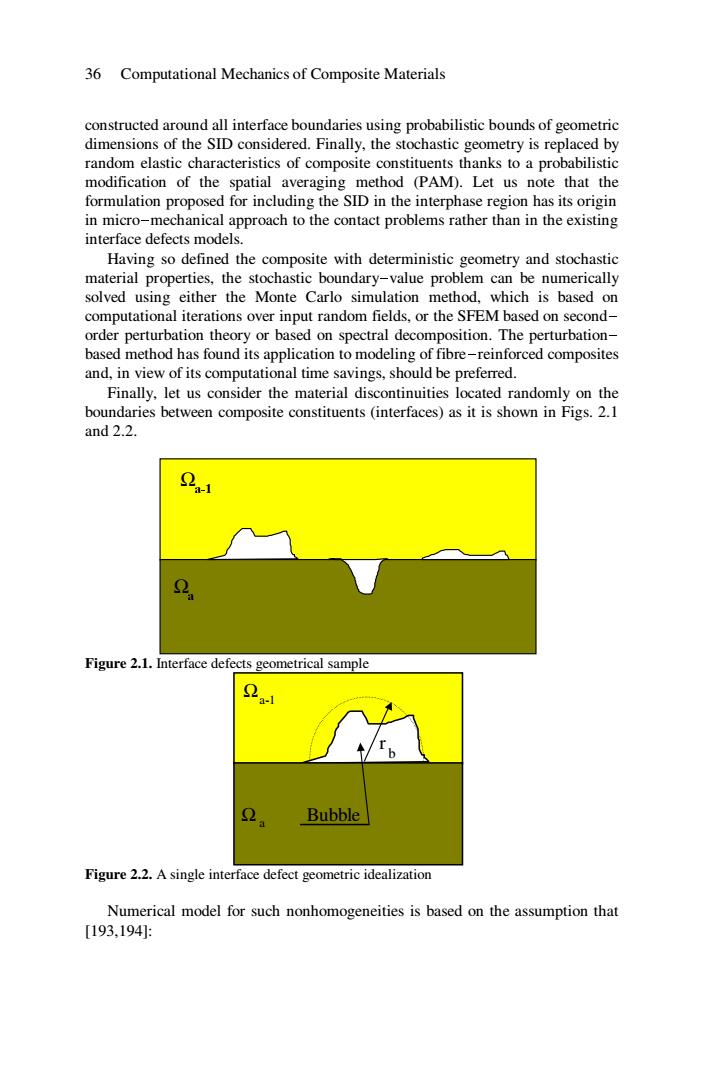正在加载图片...

36 Computational Mechanics of Composite Materials constructed around all interface boundaries using probabilistic bounds of geometric dimensions of the SID considered.Finally,the stochastic geometry is replaced by random elastic characteristics of composite constituents thanks to a probabilistic modification of the spatial averaging method (PAM).Let us note that the formulation proposed for including the SID in the interphase region has its origin in micro-mechanical approach to the contact problems rather than in the existing interface defects models. Having so defined the composite with deterministic geometry and stochastic material properties,the stochastic boundary-value problem can be numerically solved using either the Monte Carlo simulation method,which is based on computational iterations over input random fields,or the SFEM based on second- order perturbation theory or based on spectral decomposition.The perturbation- based method has found its application to modeling of fibre-reinforced composites and,in view of its computational time savings,should be preferred. Finally,let us consider the material discontinuities located randomly on the boundaries between composite constituents(interfaces)as it is shown in Figs.2.1 and 2.2. Figure 2.1.Interface defects geometrical sample 2 Bubble Figure 2.2.A single interface defect geometric idealization Numerical model for such nonhomogeneities is based on the assumption that [193,194:36 Computational Mechanics of Composite Materials constructed around all interface boundaries using probabilistic bounds of geometric dimensions of the SID considered. Finally, the stochastic geometry is replaced by random elastic characteristics of composite constituents thanks to a probabilistic modification of the spatial averaging method (PAM). Let us note that the formulation proposed for including the SID in the interphase region has its origin in micro-mechanical approach to the contact problems rather than in the existing interface defects models. Having so defined the composite with deterministic geometry and stochastic material properties, the stochastic boundary-value problem can be numerically solved using either the Monte Carlo simulation method, which is based on computational iterations over input random fields, or the SFEM based on secondorder perturbation theory or based on spectral decomposition. The perturbationbased method has found its application to modeling of fibre-reinforced composites and, in view of its computational time savings, should be preferred. Finally, let us consider the material discontinuities located randomly on the boundaries between composite constituents (interfaces) as it is shown in Figs. 2.1 and 2.2. Ωa-1 Ωa Figure 2.1. Interface defects geometrical sample Ω a-1 Ω a r b Bubble Figure 2.2. A single interface defect geometric idealization Numerical model for such nonhomogeneities is based on the assumption that [193,194]: